

Interview with the Ayalas by Edmee Cappas
August of 2008 in Loiza, Puerto Rico
In the town of Loíza traditional activities honoring St. James the Apostle show a mix of indigenous, African and Hispanic cultures, but the African elements are the most prominent. It’s in this town where you can experience an important aspect; the Castor Ayala Museum & Shop where generations of Ayala’s continue to carry on the tradition of mask making; displayed are the brightly colored mask a trademark of the family and the pride of Loiza. The family operated business continues to carry on the craft in the same location where their grandparents began the tradition of these vejigantes indigenous to the town. The craft of making mask out of coconuts husk has evolved over time but the pride of completion and wearing them for the various festivities continues to be a strong element that is destined to always be a part of Puerto Rico.
The Vejigante symbolizes the Moslems that Saint James fought with in Spain. The Vejigante costume is of bright colors and consists of a large overall with wide sleeves that once you open your arms, simulates wings. However, the most important part of the costume is the mask, which is made of coconut husk, with bamboo strips for teeth and is the most prominent craft that carries a long history of traditional Afro-Puerto Rican art.
Inside the small dwelling you will see how the Vejigante mask has evolved from simplicity to bold colors. Posters and plaques of recognition for their cultural contributions to the island are strategically placed for visitors to view. The walls, which are under construction for conservation, are actual murals painted by the elder Ayala and are a testimony to the depth of his talents as he captured the flamboyant tree and coconut palm trees, so much a part of coastal Puerto Rico where Loiza is located.
Although the Ayalas’s are famous for their Vejigante mask, they are also known throughout the island and abroad for their strong performances of the Bomba. Mask-maker Castor Ayala put together the Ballet Folklorico Hermanos Ayala, a folk music and dance troupe that continues to be a central force of entertainment during the Festival of St. James the Apostle. Bomba is a rhythm that is unique to the island of Puerto Rico and it claims its origins from the ancestors of the enslaved African peoples of this Spanish held colony. A focal piece of Bomba is the female dancer; she uses her skirts, hip and shoulder movements to entice the drummer into following her leads, however one drum dominates and it’s that drum that is beating to the dancers move. This tradition has been carried on for over 300 years with very little change and will always be an important part of the islands heritage.
For your listening pleasure you can purchase & hear clips of their music at http://www.hermanoayala.calabashmusic.com/ or write to rayala@coqui.net to order directly from them music and videos.
Loíza was proclaimed a town officially in 1719 and named in honor of Yuisa or Luisa, one of the women caciques on the island when the Spanish conquerors arrived. Loiza is also known as "La Capital de la Tradicion"- "The Capital of Traditions"- for its "bomba" music, traditional Taíno and African dishes, artisanry, and distinct culture. Loiza is home to such celebrities as the "Hermanos Ayala", Samuel Lind, Daniel Lind, DJ Eliel, DJ Tito, La Sista, Abrante, Mangani, etc. and many artists have roots in Loiza like Daddy Yankee (his father is known as El Negro from "Los Hermanos Ayala", Ramon Ayala),Tego Calderon, Don Omar, Lennox from "Zion y Lennox", Mackie from "Mackie y Yaga" and many others.
August of 2008 in Loiza, Puerto Rico
In the town of Loíza traditional activities honoring St. James the Apostle show a mix of indigenous, African and Hispanic cultures, but the African elements are the most prominent. It’s in this town where you can experience an important aspect; the Castor Ayala Museum & Shop where generations of Ayala’s continue to carry on the tradition of mask making; displayed are the brightly colored mask a trademark of the family and the pride of Loiza. The family operated business continues to carry on the craft in the same location where their grandparents began the tradition of these vejigantes indigenous to the town. The craft of making mask out of coconuts husk has evolved over time but the pride of completion and wearing them for the various festivities continues to be a strong element that is destined to always be a part of Puerto Rico.
The Vejigante symbolizes the Moslems that Saint James fought with in Spain. The Vejigante costume is of bright colors and consists of a large overall with wide sleeves that once you open your arms, simulates wings. However, the most important part of the costume is the mask, which is made of coconut husk, with bamboo strips for teeth and is the most prominent craft that carries a long history of traditional Afro-Puerto Rican art.
Inside the small dwelling you will see how the Vejigante mask has evolved from simplicity to bold colors. Posters and plaques of recognition for their cultural contributions to the island are strategically placed for visitors to view. The walls, which are under construction for conservation, are actual murals painted by the elder Ayala and are a testimony to the depth of his talents as he captured the flamboyant tree and coconut palm trees, so much a part of coastal Puerto Rico where Loiza is located.
Although the Ayalas’s are famous for their Vejigante mask, they are also known throughout the island and abroad for their strong performances of the Bomba. Mask-maker Castor Ayala put together the Ballet Folklorico Hermanos Ayala, a folk music and dance troupe that continues to be a central force of entertainment during the Festival of St. James the Apostle. Bomba is a rhythm that is unique to the island of Puerto Rico and it claims its origins from the ancestors of the enslaved African peoples of this Spanish held colony. A focal piece of Bomba is the female dancer; she uses her skirts, hip and shoulder movements to entice the drummer into following her leads, however one drum dominates and it’s that drum that is beating to the dancers move. This tradition has been carried on for over 300 years with very little change and will always be an important part of the islands heritage.
For your listening pleasure you can purchase & hear clips of their music at http://www.hermanoayala.calabashmusic.com/ or write to rayala@coqui.net to order directly from them music and videos.
Loíza was proclaimed a town officially in 1719 and named in honor of Yuisa or Luisa, one of the women caciques on the island when the Spanish conquerors arrived. Loiza is also known as "La Capital de la Tradicion"- "The Capital of Traditions"- for its "bomba" music, traditional Taíno and African dishes, artisanry, and distinct culture. Loiza is home to such celebrities as the "Hermanos Ayala", Samuel Lind, Daniel Lind, DJ Eliel, DJ Tito, La Sista, Abrante, Mangani, etc. and many artists have roots in Loiza like Daddy Yankee (his father is known as El Negro from "Los Hermanos Ayala", Ramon Ayala),Tego Calderon, Don Omar, Lennox from "Zion y Lennox", Mackie from "Mackie y Yaga" and many others.
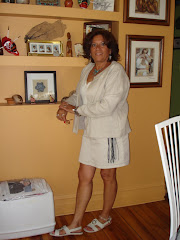
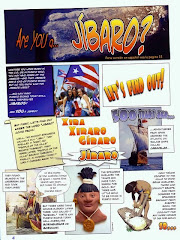




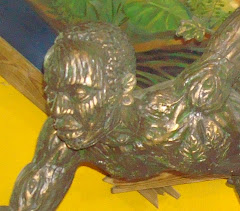





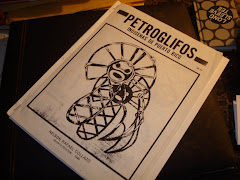



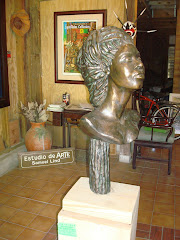
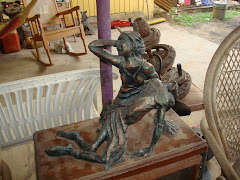

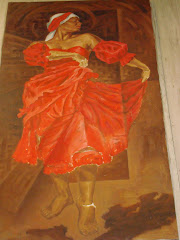
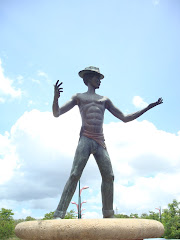
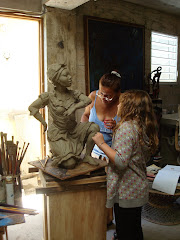

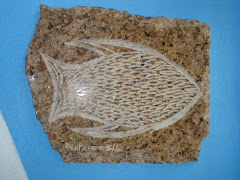
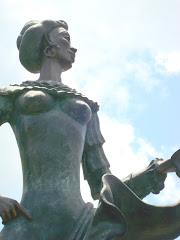
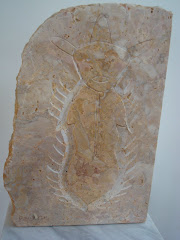


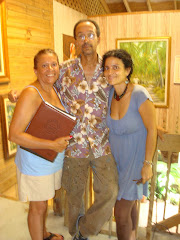


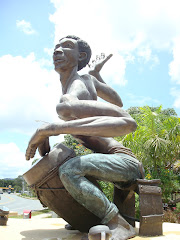
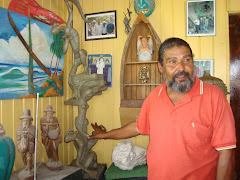

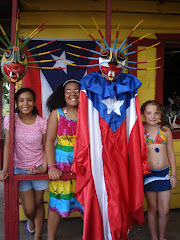


No comments:
Post a Comment